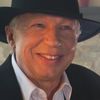Art is as ephemeral as a plume of Seattle virga, but if there is one person who has caught the rainbow, framed it and put it on the wall, it is Joe Roberts.
I’ve known Joe for a quarter century. He was born and raised in Seattle, and is today a judge, a collector, a patron, a connoisseur, and sits on the boards of the Center on Contemporary Art, and Copper Canyon Press, a poetry publishing house.
I asked Laura Hubber, long-time arts and culture reporter for the B.B.C. World Service, to chat with Joe about why the art scene in Seattle is suddenly so robust, so experimental, and how and why the city itself has become a platform for art. Laura caught up with Joe during the Seattle Art Fair, an annual showcase that originated with Microsoft co-founder and avid art-collector Paul Allen. They talked on the third floor of the King Street Train Station, re-purposed into an art installation called "Out of Sight" in conjunction with the fair. Here are excerpts of the conversation:
Laura: Why has the art scene mushroomed in Seattle in the last few years?
Joe: I think certainly the big technology companies are to be credited. They're bringing the best and the brightest in from all over the world. With them, with that rich diversity, is a bank of ideas that is changing the city, literally, in terms of its architecture, in terms of its culture, from all forms, dance, music, literature. It's a wonderful soup.
Laura: Seattle ranks top-of-the list for book buying. What's it about Seattle that inspires so much reading?
Joe: I think on one level it's because there's so much depression. I say that partly in jest, partly in reality. Unlike folks in Los Angeles, we have four seasons. The fall and the wintertime are cloudy, and rainy, and depressing, but that makes for an excellent environment in which to read with your cup of fresh coffee from Starbucks or any one of a thousand cafes.
It’s a great environment for poetry. At Copper Canyon Press we publish about twenty books a year, including Pulitzer Prize winners, Nobel Laureates, and poet laureates from around the world.
And, the poets who are published there, including guys like William Merwin, who came over from the major publishing houses in New York, prefer here because they feel we are paying attention to the art and craft of poetry in a way simply not seen elsewhere. They are being cared for and fed in a way not available elsewhere. The result is we have this rich crop of poets published, celebrated and read here. I'm just hoping it continues that way.
Laura: Looking around there seems a lot of traditional art on display, but also some mind-bending innovative work. Is that a trend?
Joe: Artists still paint, and do various kinds of assemblage and sculptural work. But because of the tech community, there's a great group of anime folks, a lot of video-based work, a lot of technology-based work. Over at CoCA (Center on Contemporary Art), we just did a show that Ray Freeman put together that was an augmented reality show, essentially using the technology of the day. We're finding that technology seeps into the art works that are being created. That's kind of fun.
Laura: I wonder if the concentration of wealth here has really boosted Seattle as an art mecca.
Joe: Well, The Seattle Art Fair is a great example. It was created by Paul Allen, who in his own right is a really important collector. He thought it was vital to have a major art fair here like you might find in Miami, Basel or Venice, or the documenta show, or the Havana Biennal. Why not use monies to fuel some creative momentum? He did this last year with rocket speed, like he's prone to do, and it has worked very nicely. A lot of works sold. Greg Lundgren and Sierra Stinson and a few of their compatriots put this "Out of Sight" show in last year as well. It's true that art often follows money, and there is a lot of art that's sold here. People from out of town are coming in and paying attention to what's being produced right here. It's excellent.
Laura: What is your involvement in the arts scene?
Joe: I'm not involved in this particular production, but I know a lot of the folks involved. I've been on the board at the Center on Contemporary Art here for well over a decade. I've served as its president, and a major benefactor, to try to continue having as many venues to exhibit works as possible. As well on the literary side. Of course, the flip side here is that with free speech in spades, you get the good, bad, and the ugly. It's that cream on the top that just makes it all so worth it. I wouldn't choose to stop.
Let me say a final word about CoCA. It's very leading edge. There's a lot of great art being made that's experimental. Half of the shows are a disaster. They're just failures, but if you're not falling flat on your face, and taking these risks, there's no chance of breaking new ground. I think that willingness to take the risk is one of the things that has been the seed from which all of this great stuff in Seattle has grown. People on the tech side are taking risks. People on the poetry side are busting the rules. These artists are completely breaking rules. That's where you get the next big thing. We have no idea what the hell it is, but by that experimentation and by falling and not being particularly afraid of falling, at least not publicly afraid, good things come of it.

